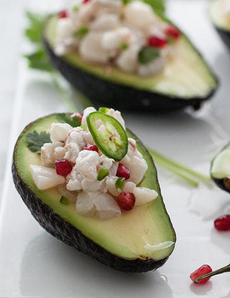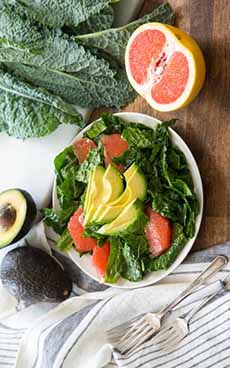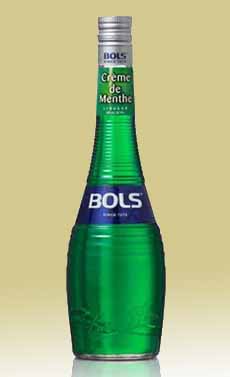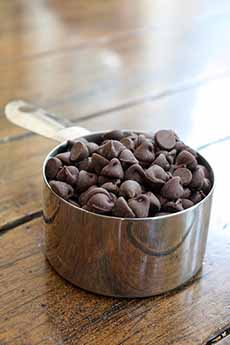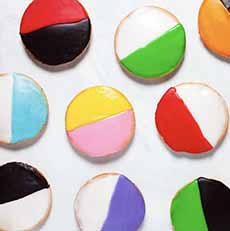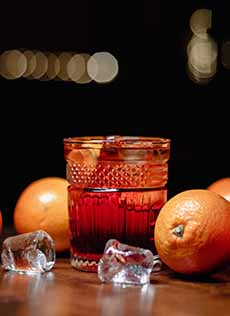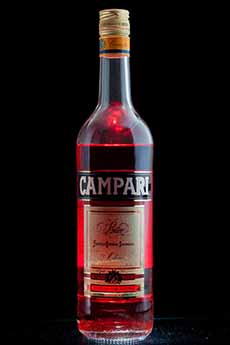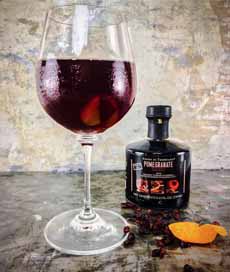|

[1] It’s not just cucumbers: many fruits and veggies can be pickled, like these pickled radishes. Add them to salads, sandwiches, cheese plates, as garnishes and in a mixed pickle plate (photo © Simply Delicious Food).

[2] Pickled apples, a delicious condiment. You can pickle them in an hour—see below (photo © Best Apples).
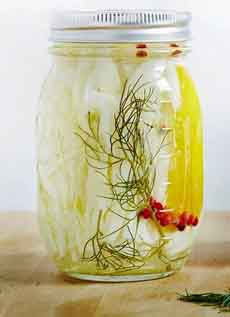
[3] If you like a fruit or vegetable, quick-pickle it. Here, pickled fennel becomes a delicacy. We serve it with smoked salmon, chicken and pork (photo © Quinciple).
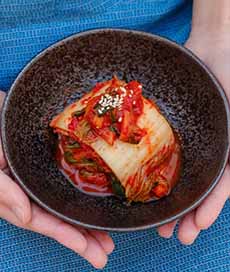
[4] The most frequently-found Korean kimchi in the U.S. is baechu kimchi, pickled napa cabbage (photo © Portuguese Gravity | Unsplash).
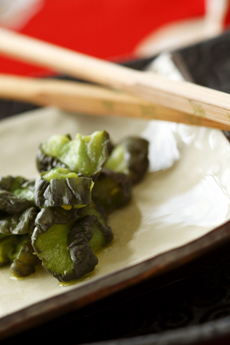
[5] Japanese pickled cucumber (photo by Katharine Pollak | © The Nibble).
|
|
Snack A Pickle Time, September 13th, is one of the more unusually-named food holidays. Pickle vegetables are an ancient food. Earthen pits were lined with leaves and filled with the items to be pickled. The earth maintained a low, steady temperature and may have contributed some microbes to speed the fermentation process. Naturally-present lactobacilli would begin fermentation within a matter of days; enough lactic acid would eventually be produced to preserve the food, sometimes for years.
At some point, vinegar made from fermented grapes was “discovered,” and vinegar in pots created pickling.
Here’s more on the history of pickles.
Your next step: Pick some pickles to celebrate the day. The celebration continues on November 14th, National Pickle Day. July is National Pickle Month.
PICKLED VEGETABLES WORLDWIDE
In the cuisines of the world, there are thousands of different pickle types. China makes an estimated makes 130 different kinds of pickles; there are some 200 types of Korean kimchi.
Pickled vegetables are used as condiments or eaten as side dishes.
What Americans call “pickles” are typically pickled cucumbers; but pickled apples, asparagus, beets, bell peppers (remember Peter Piper), cabbage, carrots, cauliflower, fennel, jalapeño, mushrooms, okra, onions, peaches, radishes, tomatoes, watermelon and many more foods are pickled—including sauerkraut, pickled cabbage—and hence, are also pickles.
Italian immigrants in the 19th century brought giardiniera, a delightful blend of pickled bell peppers, carrots, cauliflower, onions and zucchini.
Beginning in the latter half of the 20th century, immigrants from countries beyond Europe brought their own wonderful pickle traditions. A small sample:
Chinese pào cài, a mix of carrots, Chinese cabbage, cucumbers, daikon radish, ginger, hot chiles, long beans, mustard stems, turnips.
India’s mango pickles (yes, a fruit).
Indonesian acar, a mix of cabbage, carrots, cucumber, and/or long beans spiced with chiles and sliced shallots.
Israeli torshi, pickled turnips.
Japanese tsukemono: gari and beni shoga, pickled ginger; kyurizuke, cucumber pickles; takuan, pickled daikon radish; shibazuke, a mix of chopped cucumbers and eggplant; ume, pickled plum; among others.
Korean kimchi; baechu kimchi, the most commonly found in the U.S.
Moroccan preserved (pickled) lemons.
It’s not just fruits and vegetables: cheese, eggs, fish, meats, even tea, are pickled.
> Here’s a list of pickled foods worldwide.
Our own Pickle Glossary features mostly European-style pickles, with some global varieties added (we’ll be adding more).
It’s good reading (do you know the difference between a genuine dill pickle and a German dill pickle), and the pickles look delicious.
By the way, olives, which have been pickled in the Middle East since pre-history, are pickled—not pickled vegetables, but pickled fruits—the fruits of the olive tree.
Cucumbers are also botanical fruits, as are tomatoes (the difference between fruits and vegetables).
PICKLED FRUITS
What about pickled fruits? Long before the invention of canning, fruits were preserved by pickling.
In the U.S. alone, anything that could be pickled was pickled: apples, apricots, apricots (blackberries, blueberries, cranberries), cherries, crab apples, currants, grapes, mango, melon, peaches, pears, plums, raisins, tomatoes (including cherry and green tomatoes)…just about any fruit can be pickled.
QUICK PICKLING AT HOME
You don’t need to preserve fruits and vegetables to enjoy them pickled. You can pickle them in an hour without any equipment (meant to be consumed in a week or two, not for long-term storage).
Here’s how to do it.
Why not start with pickled apples, which are delicious:
As a side with grilled, poached and roasted meats and seafood
As a condiment with sandwiches and burgers
With a cheese board
As a general snack
PICKLING VS. FERMENTING
Pickling and fermenting are different ways to the same end, i.e., preserving the vegetable. The difference:
Pickling involves putting the food into an acidic brine to produce a sour flavor
Fermenting provides the sour flavor without any added acid, employing natural microorganisms such as bacteria or yeast.
Here’s more about it.
|



